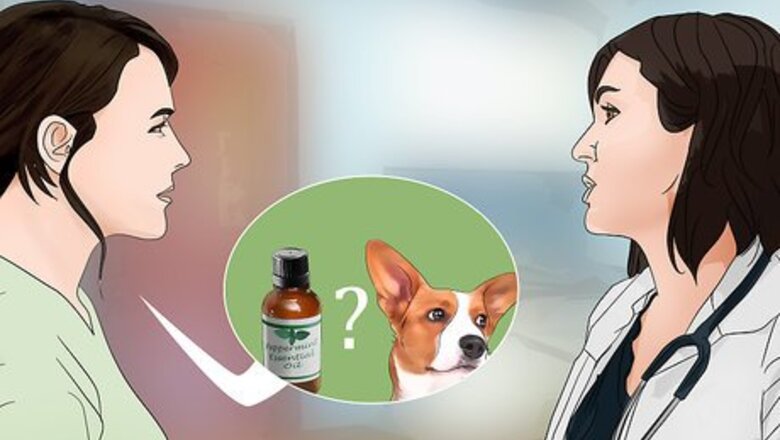
views
Applying Peppermint Oil on Your Pet
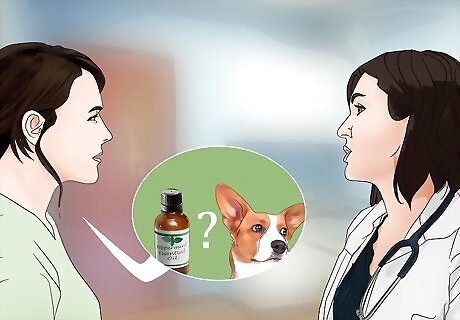
Talk to your veterinarian about whether peppermint oil is safe for your pet. Essential oils can be toxic to some pets, such as cats. This is especially true when they are not diluted enough or if they are ingested by an animal with a weak immune system. Talk to your doctor about your pet's health and about your specific plan for treatment in order to ensure that you can safely use essential oils on your pet. Your veterinarian can help you assess whether peppermint oil is safe. They may also be able to suggest how best to apply it and what to dilute it with.
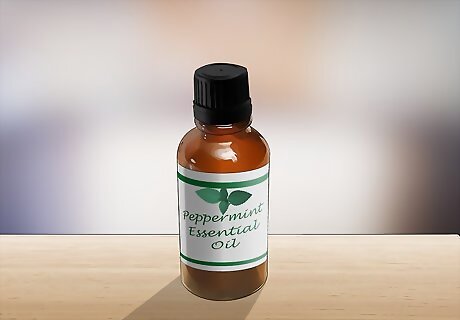
Purchase peppermint oil. Peppermint oil can be found at all natural food stores. It can also be purchased through many online natural product retailers. Make sure to get 100% pure peppermint oil so that you can make your own diffusions. Pure peppermint oil is made by pressing the oil out of peppermint leaves. Though peppermint does not kill full-grown fleas, it helps in restricting their attack on pets. One way it does this is by killing the larvae of fleas, which are more vulnerable.
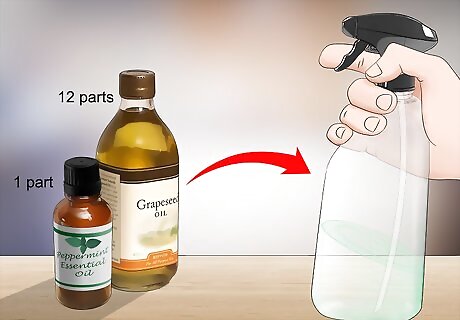
Make a peppermint oil solution. Mix 12 parts carrier oil, such as grapeseed oil, with 1 part peppermint oil. For instance, combine 12 tablespoons of grapeseed oil with 1 tablespoon of peppermint oil. Ensure that the solution is stirred or shaken together well before using it on your pet. Shake the solution before each use, as the parts will separate when not in use. A little of this solution will go a long way, so there's no need to make a batch that takes more than a tablespoon of peppermint oil.
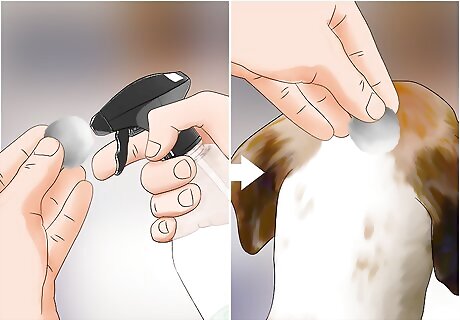
Dab the oil mixture on your pet. Soak a cotton ball or pad with your peppermint oil mixture. Pick the spots that your pet has been itching and then separate the fur in that area with your fingers. Pat the cotton ball or pad directly onto the pet's skin. Put it on any affected areas, which typically includes the animal's neck and back. These are spots most pets can't easily groom, so they tend to be where fleas congregate. The oil can also help soothe any itching or discomfort your pet has because of the flea bites.
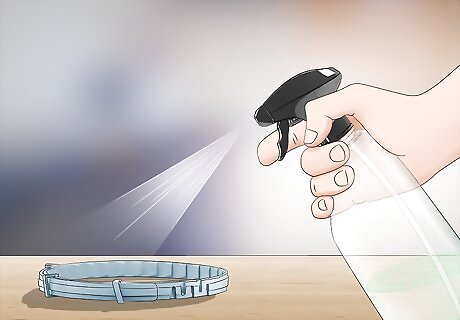
Apply the oil mixture to your dog's collar. Put some of the solution on a small pad or cotton ball and then dab it onto your pet's collar. The oil mixture will absorb into the collar, giving your pet some protection from a flea infestation. The smell of the peppermint will help keep fleas from being attracted to your dog.
Spraying Peppermint Oil on Household Surfaces
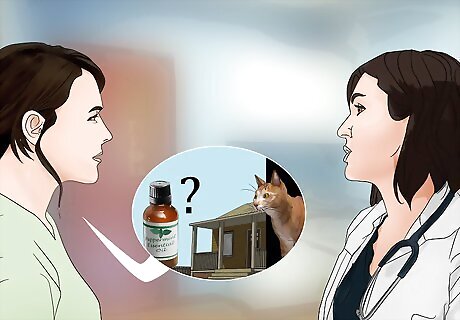
Talk to your veterinarian about whether to use peppermint oil in your home. Some pets, such as cats, may respond negatively to peppermint oil in their environment. Talk to your vet about how you plan to use peppermint oil and whether it could pose any health risks to your pet.
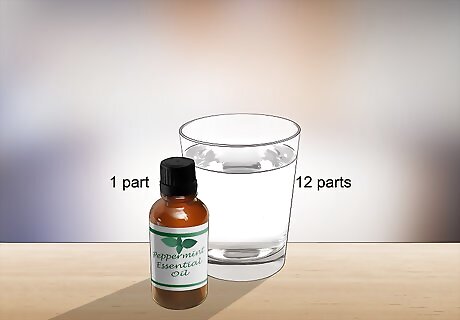
Make a mixture of peppermint oil and water. Combine 12 parts water with 1 part peppermint oil. You only need a small amount of peppermint oil to make the surfaces of your home unattractive to fleas, so you don't need to make it too strong. Peppermint oil has an anti-larval action when applied to household surfaces. It makes the surfaces uninhabitable to the flea larvae.
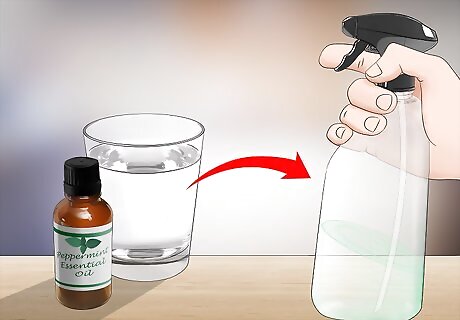
Put the mixture in a spray bottle. It's easiest to apply the mixture by spraying a light mist over the entire surface you are trying to protect. Use an all-purpose sprayer, which are typically available at all hardware and big box stores. Label the bottle so that you know what is in it and so that you can use the mixture again in the future.
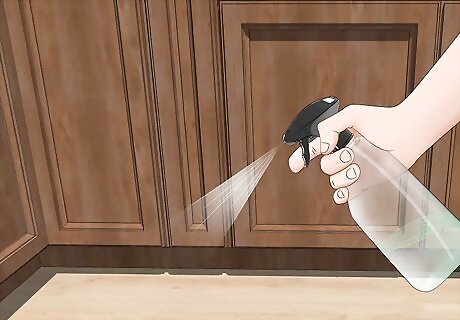
Mist any surfaces that can get slightly wet. Hold the spray bottle a 2–3 feet (0.61–0.91 m) away from each surface. Cover the entire surface with a light covering of the solution. Then let it dry naturally before touching the surfaces. Surfaces to spray include your carpet, fabric covered furniture, and any areas that the pet spends a lot of time in. The water will evaporate quickly after you spray it around your home, leaving behind only the peppermint oil. Be cautious about spraying the mixture on surfaces that can't have any moisture on them, such as leather surfaces.
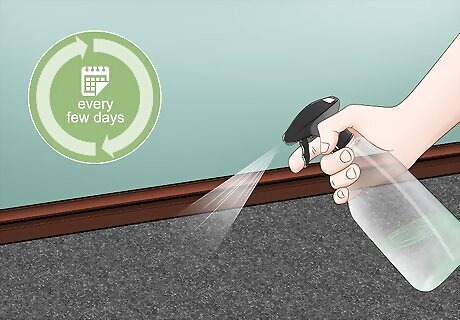
Reapply the mixture every few days. The peppermint spray will only work to deter fleas for a few days, so reapply the spray often. This will help you to control fleas on an ongoing basis.
Using a Peppermint Sachet in a Vacuum
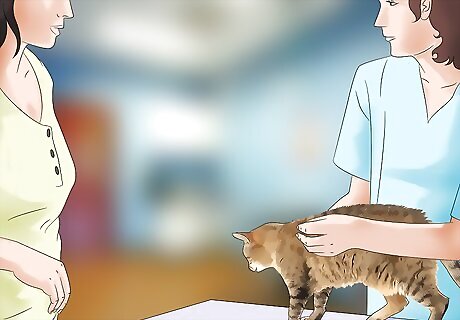
Discuss the use of peppermint oil with your veterinarian. There are some common pets, such as cats, that may not respond well to peppermint oil in their environment. Ask your vet about how and if you can use peppermint oil safely for flea control.
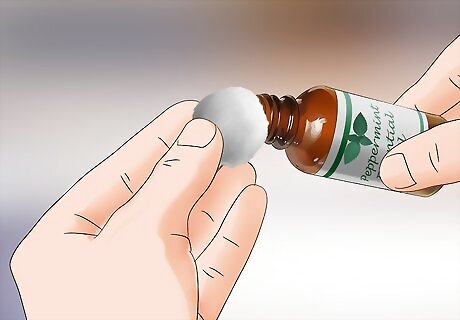
Soak a cotton pad or ball with pure peppermint oil. You should put enough oil on so that the pad or ball is saturated but not dripping. If you put too much on, let any extra oil drip off before proceeding.
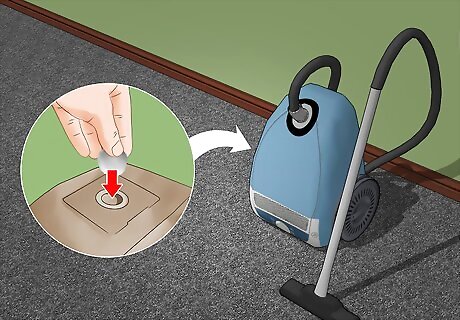
Place the sachet in your vacuum canister or bag. It doesn't matter what type of vacuum you have. You simply need to drop it in the collection vessel so that whatever is sucked in there will be exposed to the oil. The pad or ball will get dirty as you use the vacuum but the peppermint oil will continue to work.
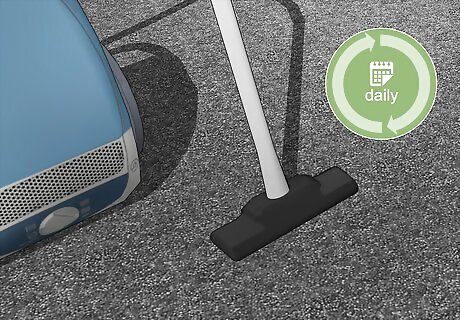
Vacuum the affected areas in the house daily. Vacuum all surfaces, including all creases and hidden areas of your furniture and carpeting. This will help you to suck the flea egg and larva from your home. Once the fleas and larvae are in the vacuum canister, they will be killed by the high level of peppermint oil inside.
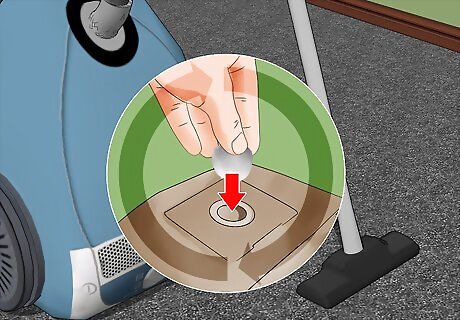
Replace the pad when you empty out your vacuum. Empty out your vacuum whenever it becomes full. However, replace the pad or ball so that you continue to make the vacuum container uninhabitable to fleas. Refresh the peppermint oil in your vacuum canister or bag if you haven't used your vacuum in a while.












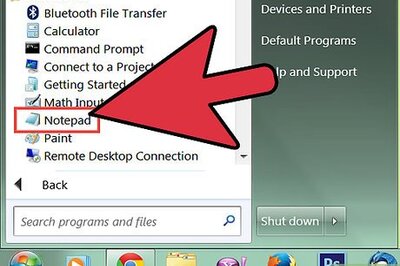

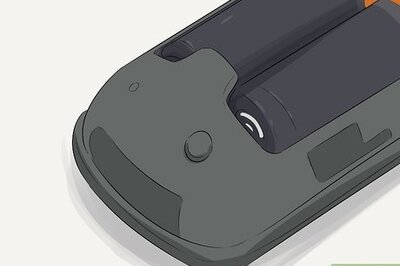




Comments
0 comment